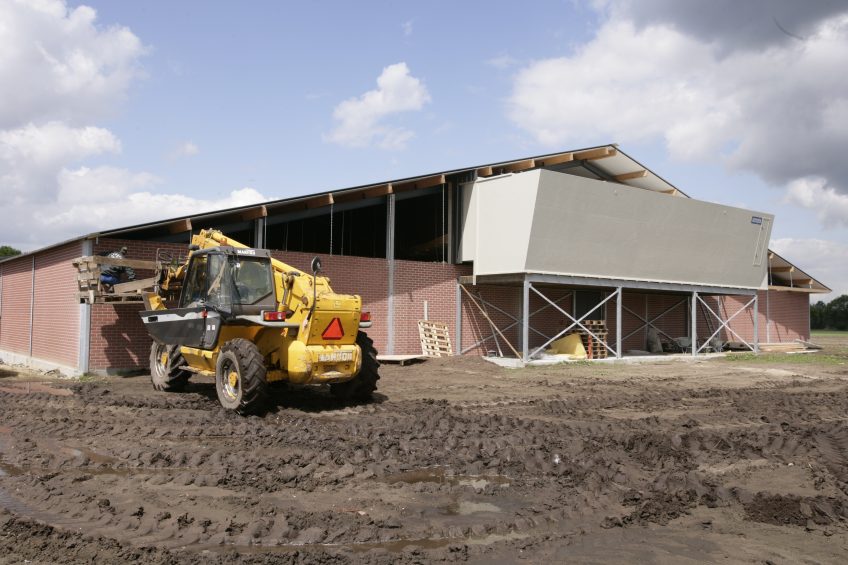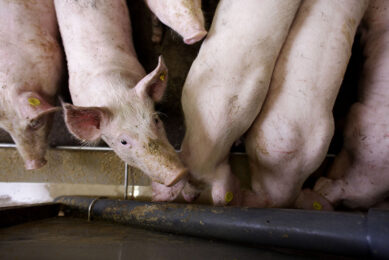How to improve pig house air scrubbers?

The performance of air scrubbers on pig farms can easily be improved, according to recent research in Belgium. Good maintenance is the key.
As part of a doctoral study, researcher Caroline Van der Heyden identified the extent to which air scrubbing systems lose their scrubbing efficiency when air flow rates, acid levels and other parameters become sub-optimal. Her research was conducted at Ghent University and the Flanders Research Institute for Agriculture, Fisheries and Food (ILVO).
About 10 years ago, Flanders (the northern part of Belgium) required farmers to install a low-emissions system in all newly-built conventional pig housing.
New in Flanders pig business
According to a press release shared by ILVO, it is the 1st time in Flanders that a mathematical model has been made that can isolate the different factors that ultimately lead to the amount of ammonia removed from the air. ILVO has now made a unique test installation for air scrubbing available, where the acid levels, settings, air flow rates, thickness of the scrubber packets and so forth can be measured. This installation makes it possible to perform complex experiments and measurements.
“Air scrubbers operate completely automatically using sensitive sensors. Consistent maintenance and recalibration is a must,” said Dr Van der Heyden in the press release.
Since 2004 Flanders required all newly-built (non-organic) pig and poultry barns to limit their ammonia emissions. An air scrubbing system for barn air must achieve an ammonia reduction of 70%.
Pig producers installing air scrubbers
To reduce the impact of barn emissions and the potential problems for those living close to the farm, producers often install an air scrubber, which essentially can be either chemical or organic. Both types of air scrubbers have dozens of variants available on the market, the press release explained. They remove ammonia and other pollutants (odour, particulate matter) from the outgoing air, then converted via acidified water and subsequent chemical and/or biological reactions.
After Dr Van der Heyden’s study, 2 extra methods to measure air scrubbers and to help develop them have become available:
* A powerful mathematical model that can predict the air scrubbing on a series of parameters using the values;
* A ‘pilot’ air scrubber mounted on the buildings of the ILVO-UGent pig campus, where researchers can adjust the installation to record the effects on performance under practical circumstances. The installation makes it possible to vary the acidity of the water, the air flow rates, the thickness of the scrubber packs, etc.
“The two tools are useful, either combined or separately, for further scientific work but also for the policymakers and developers of air scrubbers,” Dr Van der Heyden said.
Determining the amount of ammonia removed
To determine the amount of ammonia removed, there is now a continuous measuring system that records data during an entire finishing period, the press release explained. Up to now, only point measurements were done. The variations in day vs. night, size of the animals, animal behaviour, barn management and other factors can be related to the air scrubbing data. In pigs the ammonia emissions in the barn air increase linearly (and not exponentially) during the finishing cycle.
For a few air scrubbers, the entire exhaust surface – several m2 – was mapped. Some differences in air scrubbing were noted depending on the measurement location within the exhaust area. To measure the ammonia reduction even more precisely, the outgoing air must therefore be measured in several places.
Optimising with maintenance and recalibration
Dr Van der Heyden stated that the current technology behind chemical and biological air scrubbing in pig barns can be optimised by careful maintenance and recalibration. The functionality of biological air scrubbers in pig barns can be improved via inoculation with active sludge from a water purification plant. A thorough training for the farmer to better understand and maintain the installation together with the installer is thus recommended.
She concluded that there are many ways to improve the effectiveness of air scrubbers: biological air scrubbers can improve the odour reduction without compromising the ammonia reduction. Chemical air scrubbers are stronger in the combination of ammonia and particulate matter.











